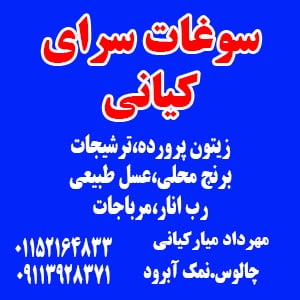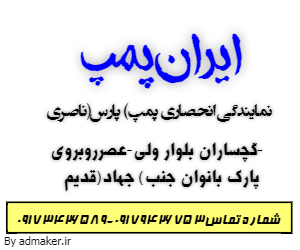The Secrets of Mirror Work in Mosque Design: Where Art Meets Architecture
The Secrets of Mirror Work in Mosque Design: Where Art Meets Architecture Mirror work, a stunning and intricate element of Iranian architecture, plays a significant role in the interior design of many mosques.Far beyond simple decoration, this artistic technique enhances spatial depth, reflects light beautifully, and creates a serene, spiritual ambiance. In this article, we
کرونا :

The Secrets of Mirror Work in Mosque Design: Where Art Meets Architecture
Mirror work, a stunning and intricate element of Iranian architecture, plays a significant role in the interior design of many mosques.Far beyond simple decoration, this artistic technique enhances spatial depth, reflects light beautifully, and creates a serene, spiritual ambiance.
In this article, we explore the secrets behind mirror work in mosque design and reveal how this traditional art, when combined with modern architectural science, can shape a divine atmosphere.

What Is Mirror Work and Why Is It Used in Mosques?
Mirror work involves decorating surfaces—such as walls, ceilings, and columns—with cut pieces of mirror in artistic arrangements. In Islamic architecture, particularly in Iran, mirror work is extensively used to transform sacred spaces into luminous and inspiring environments.
The primary purpose of mirror work in mosques is to amplify natural or artificial light. Mirrors naturally reflect and distribute light, making the prayer space appear brighter and more spacious. But the effect goes beyond aesthetics—mirror work evokes a sense of spirituality, enhancing the sacred nature of the mosque.
For a visual journey into this captivating art, visit our page on mirror work in Islamic architecture.

Mirror Work in Mosque Design: A Perfect Balance of Art and Function
Designing a mosque requires more than beauty—it must also foster spiritual tranquility and serve functional needs. Prayer halls should encourage worshippers to feel peace and connection to the Divine. This is where mirror work becomes essential.
Architects skillfully integrate mirrors as both decorative elements and tools for light manipulation. By carefully selecting the placement and orientation of mirrors, they maximize the effect of illumination and space. The result is a harmonious blend of architectural science and artistic craftsmanship, creating spaces that inspire devotion.
Different Techniques of Mirror Work in Mosques
Mirror work isn’t a one-size-fits-all art form. Various techniques have evolved, each offering unique aesthetics and effects:
۱٫ Islamic Motif Mirror Work (Eslimi Style)
This classical technique features intricate geometric and floral patterns inspired by nature. It’s commonly found in historic mosques and showcases the traditional beauty of Persian ornamentation.
۲٫ Mosaic Mirror Work (Moarraq Style)
In this method, small mirror pieces are arranged like a puzzle to form detailed patterns. It is especially popular in plasterwork (stucco) decorations and adds brilliance and complexity to walls and domes.
۳٫ Suspended Mirror Work
A modern approach where mirrors hang from ceilings or walls, creating dynamic light reflections and shadow play. This adds a unique visual dimension to the prayer space.
Motifi-Fard Brand: Leaders in Mirror Work and Stucco for Mosques
Motifi-Fard, a renowned brand in mosque decoration, has become a leading name in mirror work and stucco art (Gachbari). With decades of experience and a portfolio of high-profile projects, Motifi-Fard combines traditional techniques with modern innovation to deliver exceptional results.
What sets Motifi-Fard apart is their commitment to quality materials, refined craftsmanship, and customized design. Whether you are restoring a historic mosque or building a new one, working with this brand ensures artistic excellence and architectural integrity.
Mirror Work and Lighting: Enhancing the Spiritual Atmosphere
Lighting is a crucial aspect of mosque design. When integrated with mirror work, it elevates the spiritual energy of the space. Mirrors are strategically placed to reflect light across the hall, creating a sense of openness and purity.
This is particularly effective in smaller mosques, where reflective surfaces help eliminate the feeling of constraint. The result is a peaceful, luminous environment that uplifts the soul and mind of every visitor.
How Mosque Design Differs from Other Religious Spaces
While churches and temples also use decorative arts, mosque design emphasizes simplicity, light, and spiritual depth. Mirror work in mosques is not just ornamental—it is deeply symbolic and contributes to the overall spiritual experience.
Unlike Western religious spaces, where vibrant colors and figurative imagery may dominate, Islamic sacred design focuses on harmony, symmetry, and light. This makes mirror work an essential element in authentic mosque architecture.
Conclusion
Mirror work is a timeless art that plays a vital role in the architectural identity of mosques. When thoughtfully combined with design principles and lighting techniques, it transforms a space into a haven of peace, light, and spiritual reflection.
The Motifi-Fard brand continues to lead the way in this field, offering unparalleled expertise in combining ancient techniques with modern aesthetics. Whether your goal is restoration or innovation, their team can help you create a mosque interior that is both artistic and deeply meaningful.
To explore Motifi-Fard’s portfolio and learn more about their custom services, visit their official website at motifi-stucco.com.
نویسنده:
برچسب ها :
ناموجود- نظرات ارسال شده توسط شما، پس از تایید توسط مدیران سایت منتشر خواهد شد.
- نظراتی که حاوی تهمت یا افترا باشد منتشر نخواهد شد.
- نظراتی که به غیر از زبان فارسی یا غیر مرتبط با خبر باشد منتشر نخواهد شد.









ارسال نظر شما
مجموع نظرات : 0 در انتظار بررسی : 0 انتشار یافته : ۰